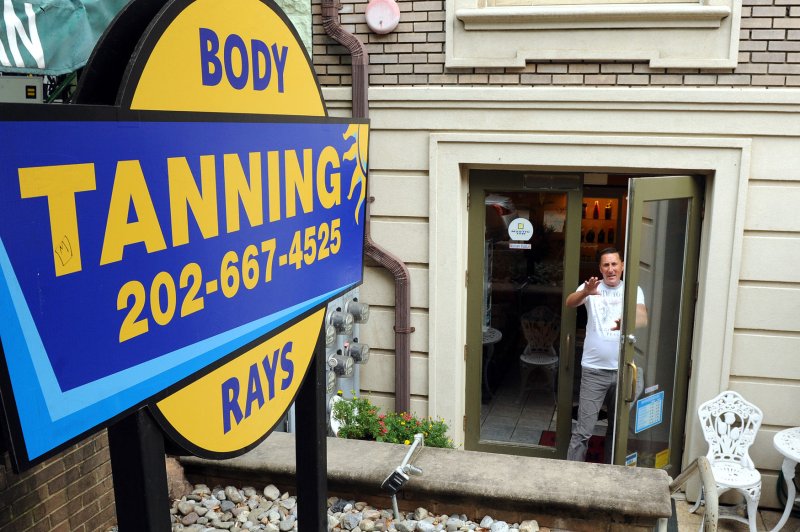A man stands at the door of a tanning salon in Washington on July 29, 2009. An International Agency for Research on Cancer working group says the risk of skin cancer jumps 75% when tanning devices are used starting before the age of 30. The organization ranks tanning beds as carcinogenic as arsenic, asbestos and tobacco. File photo by UPI Photo/Roger L. Wollenberg |
License Photo
SAN FRANCISCO, Oct. 10 (UPI) -- Gay and bisexual men have higher rates of skin cancer than heterosexual males. According to a new study, that fact may be explained by the popularity of tanning beds among gay and bisexual men.
"Overall, the rate of indoor tanning among these men is between three to six times greater than it is among heterosexual men," Dr. Matthew Mansh, an internal medicine resident at San Francisco's California Pacific Medical Center, told HealthDay News.
"Gay and bisexual men also have about twice the rate of skin cancer compared with heterosexual men, both in terms of melanoma and non-melanoma," said Mansh.
According to the new paper, published this week in the journal JAMA Dermatology, self-identified gay and bisexual men over the age of 18 are six times more likely to visit an indoor tanning salon. Accordingly, gay and bisexual males exhibit a 7 percent rate of skin cancer. Straight men face only a 3 percent rate.
Gay and bisexual women were also more likely to develop skin cancer than straight women.
Despite outreach efforts by the CDC and other health organizations, indoor tanning remains popular among women -- especially young white women. More than a third of white women between the age of 18 and 21 regularly uses indoor tanning beds.
Health officials are looking for new ways to reach and educate indoor tanning users. Another study published this week in JAMA Dermatology highlighted the potential for targeted online ads.
Researchers at the University of California, San Francisco used Google ads to warn Internet users searching for tanning beds and salons about the risks of indoor tanning. The researchers tried dozens of iterations of their mini PSA, one of which bested the 1 percent click-through rate -- a profitability threshold for Google ads.
"We really want to strive to reach people at highest risk for these behaviors in an easy, cost-effective way," Eleni Linos, an assistant professor of dermatology at UC-San Francisco, told the Washington Post.















